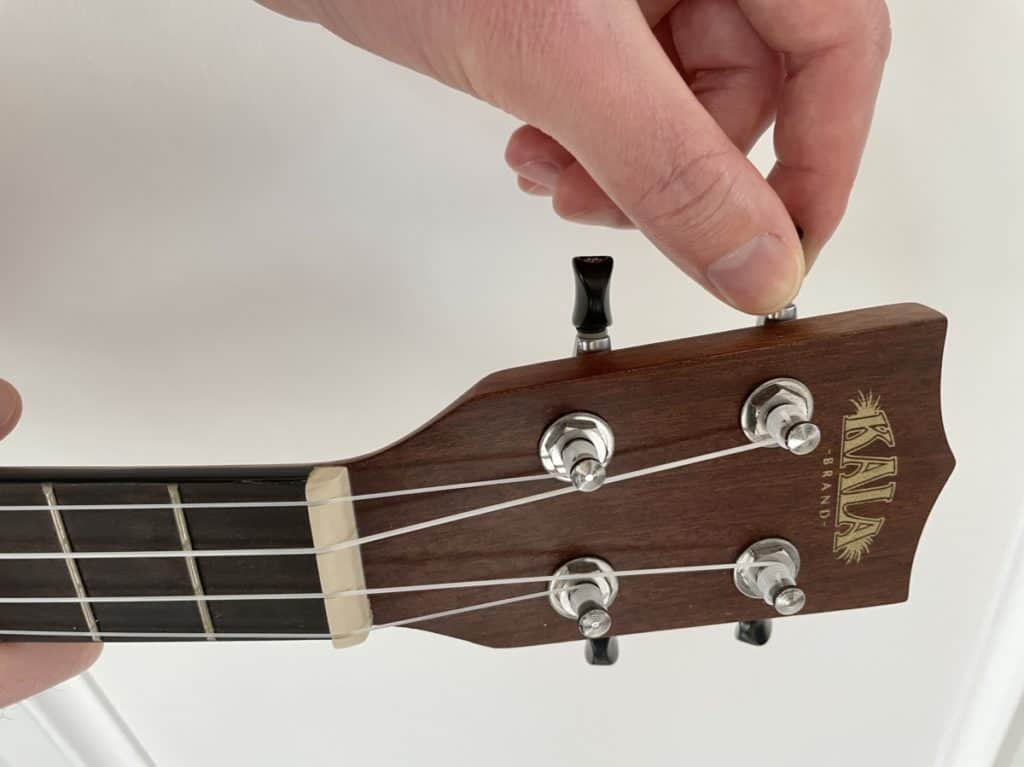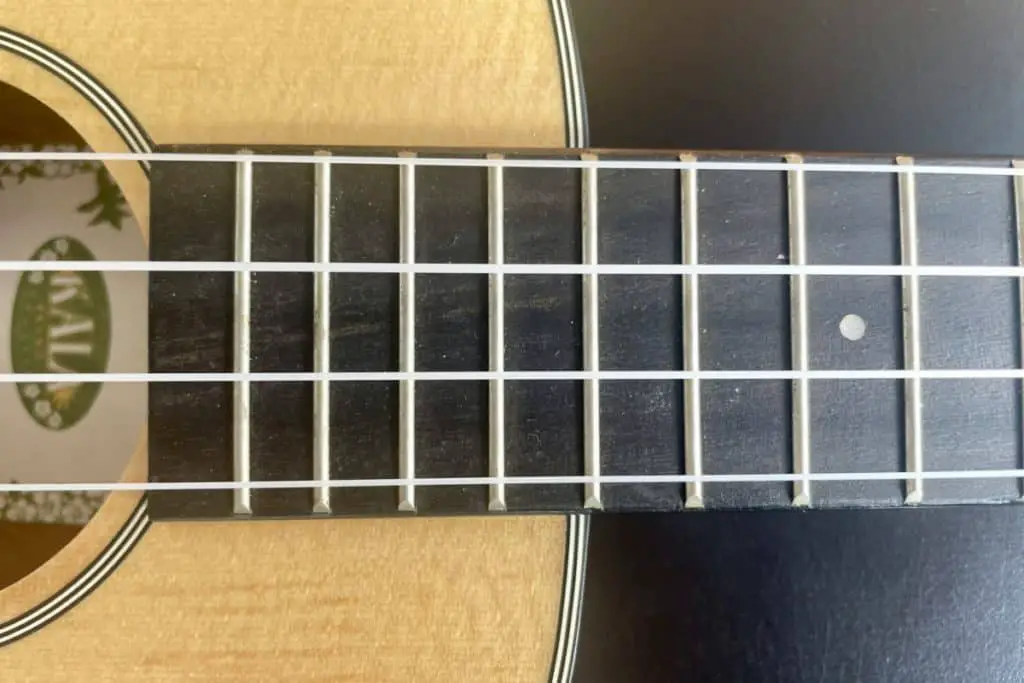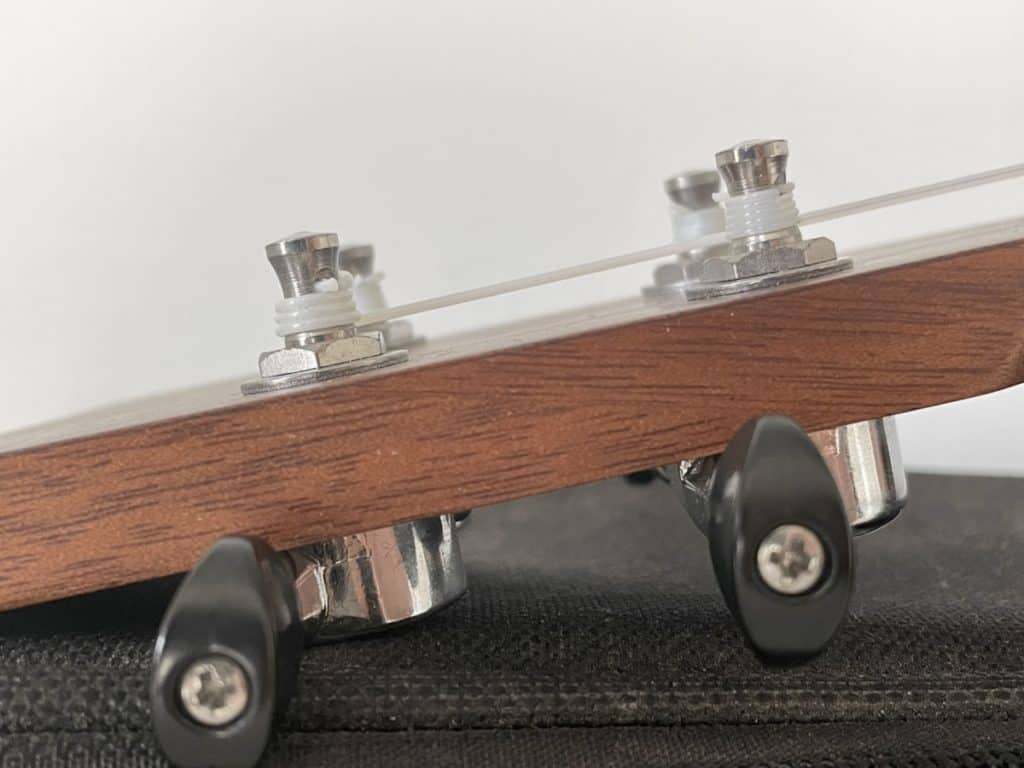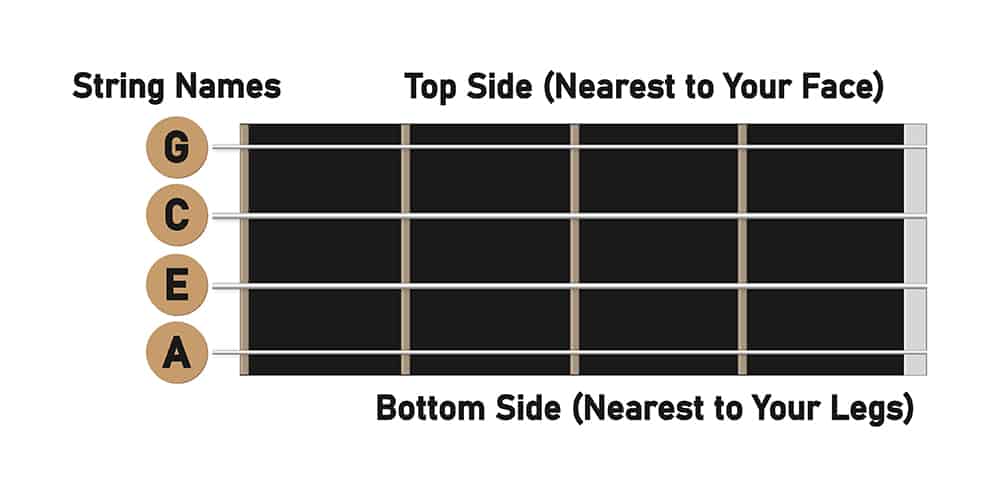Today I’m going to cover how hard ukuleles are to tune.
Despite being a player of both the ukulele and the guitar, even I found it difficult to tune my ukulele when I first got one! So don’t be intimidated if you’re also finding it a bit tricky to tune yours.
Now let’s get into the details.
Are Ukuleles Hard to Tune?

For a beginner, ukuleles can be difficult to tune by ear or by referencing another tuned instrument (like a piano). Using an electronic tuner or app makes tuning a ukulele much easier. However, it can still be difficult to keep new strings in tune, because they tend to stretch out for a few days after installation.
That’s the high-level overview, now let’s dig into more details on the part of ukulele tuning that beginners tend to find the most frustrating.
Why It’s Hard to Keep a Ukulele in Tune
Ukuleles can be hard to keep in tune for a number of reasons. Here are two of the most common issues:
- Plastic strings need time to settle
- The tuning pegs sometimes get loose
Let’s talk about these two issues in more detail.
1. New Strings Stretch
Ukulele strings are made out of plastics, such as nylon and fluorocarbon. You can learn all about the various types of materials in our ukulele string material guide.
But for tuning, this is significant because it means that new strings are prone to stretching.

The stretching happens as you perform the usual motions of playing your ukulele, like tuning, strumming, pressing your fingers against the strings to form chords, etc.
This string stretching can put your ukulele out of tune surprisingly quickly (like in the middle of one playing session). And that can make you think that you’ve tuned your ukulele wrong, even if you did it correctly, because of how quickly the tuning can shift as the strings stretch.
But the good news is that your strings will eventually stretch as far as they can go and that’s when they’ve “settled in”. From that point forward, your ukulele should be able to hold a tune much longer (at least until you change the strings again).
If you’re wondering how long this stretching process lasts, you can expect it to be over after a few days of playing.
And the more you play the quicker your uke strings will settle and the faster your tuning problems will subside.
When the strings do settle in, your strings will also start to sound better as the strings become stronger.
2. Your Tuning Pegs Might Need Adjusting

Your ukelele’s tuning pegs (also called the “tuners”) are what keeps your strings in place and in tune. If the tuners haven’t been set up correctly, this can lead to all kinds of tuning issues.
The tuning pegs on your ukulele are the 4 pegs (no surprise there!) and the mechanism attached to them on the headstock of your ukulele. Issues with the tuners are most common in cheaper ukuleles that have gone straight from the factory to you without being set up by a ukulele expert.
If the tuners aren’t tight enough, they may give in to the pressure of the strings; slowly but surely pulling your uke strings out of tune. However, different ukuleles have different types of tuning pegs, so how to fix a slipping peg might differ based on your particular ukulele.
Watch this short video to learn more about that:
How to Keep a Ukulele In Tune (So Less Tuning is Needed!)
Now let’s respond to the above issues, with a few handy tips!
Tip 1: Tune Up Not Down!
When tuning your ukulele it can really help keep your uke in tune by always tuning up towards the note instead of down.
As you tune a string from a lower note up to the higher note the string is supposed to be, the tuner is tightening the string and wrapping around the tuner. If you tune down, the tuner is loosening its grip on the string and unraveling around the tuner.
The benefit of tuning up and tightening the strings instead of loosening them is that tightening the string is a lot more stable than loosening one.
Tuning down causes the tuner to lose its grip on the string more and can lead it to drop even lower in tuning as you play.
If you’re tuning your uke and go a little too high and have to tune the string down, it’s always best to loosen the string a note or so and begin the process of tuning UP again.
Tip 2: Get Your Ukulele Set-Up Properly
Often ukuleles that have tuning issues simply aren’t set up properly. This is often a result of having too much “action” (i.e. the distance between the strings and the fretboard). If the strings are too far away from the fretboard they will be hard to play and will also tend to stretch more while you play.
Reducing the distance between the fretboard and the strings puts less pressure on the strings while you play and will make your ukulele stay in tune for a lot longer!
Be careful not to make the setup too low, however. If the strings are too close to the fretboard they will likely start to make a buzzing sound as they rub against the frets. Finding a happy medium is key here!
The preferred “action” distance for a ukulele is about the same as on an acoustic guitar, which is around 2-2.5mm between the fret and the strings.
Setting up your ukulele properly can be a little tricky but there are plenty of tutorials on YouTube that will teach you how to do it. It’s a great way to get to know your instrument and get it sounding how you want it to.
If you can’t seem to get your ukulele set-up the way you want, you can also take it to your local music shop to have a pro do the adjustments.
How to Tune a Ukulele (The Easiest Way)
Now let’s take a quick look at tuning a ukulele the easy way. Check out this video below for a full walkthrough. We’ve also summarized the steps below the video.
1. Learn the Notes
The first step to tuning your ukulele is to learn the notes. For Soprano, Concert, and Tenor ukuleles its all the same tuning:
G-C-E-A
See below for more context on the string positions…

2. Download a Tuner App
The easiest way to get your ukulele tuned perfectly is to use an app.
There is a variety of apps available that you can use to tune your ukulele no matter what phone you have and a majority of them are free. If you don’t fee like downloading an app, you can also use the UkeBuddy web tuner.
3. Tune Each String (One-by-One)
Next, you need to tune the strings one by one. It’s a good idea to get into the habit of tuning the top string first and making your way down. This way you won’t accidentally turn the wrong tuner peg as you move on to other strings.
Starting with the G string, pluck the string so that the app detects the pitch of the note played. If it says the note is lower than G you need to tune up and if it’s higher than G you need to tune down.
Tuning a ukulele (or any string instrument) is chromatic which means that the notes are ordered from A through to G.
This can be a little confusing at first so here’s the specific order of notes and whether they’re higher or lower.
LOWEST A, A#/Bb, B, C, C#/Db, D, D#/Eb, E, F, F#/Gb, G, and G#/Ab HIGHEST
This scale of notes also loops around when it reaches the end. So if you are tuning the G string and your tuning app says the string is currently playing an ‘A’ note then you should tune down instead of up. Going from A to G#/Ab to G!